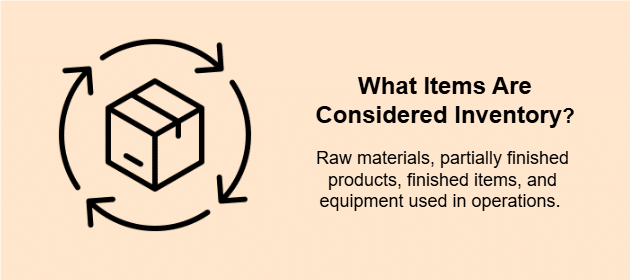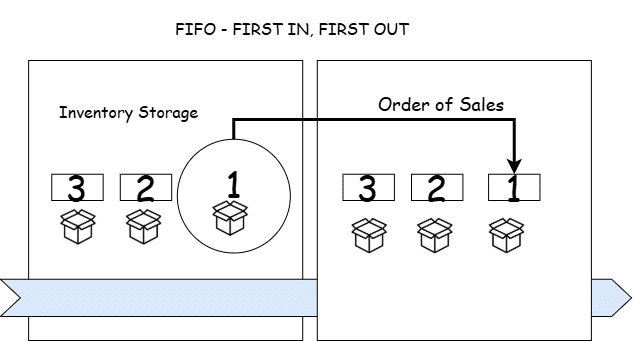What Is Inventory Management?
Inventory management refers to overseeing the flow of goods from manufacturers to warehouses and ultimately to customers. This includes raw materials, work-in-progress items, and finished products. Effective inventory management ensures that businesses have the right products, in the right quantities, at the right time.

Types of Inventory Management Techniques
Just-in-Time (JIT)
A strategy where inventory is replenished exactly when needed, reducing storage costs. JIT lowers the cost of holding inventory, reduces waste and improves cash flow. Despite these benefits, the biggest drawback is that it requires reliable suppliers. It is also vulnerable to supply chain disruptions.
First-In, First-Out (FIFO)
For FIFO, the oldest inventory items are sold first. It is suitable for perishable items or products with expiry dates.
Economic Order Quantity
The economic order quantity (EOQ) calculates the ideal order quantity to minimize total inventory costs. It has the formula:
EOQ = √ [2DS/H]
D = Demand in units (annual)
S = Order cost
H = Holding costs (per unit, per year)
Demand in units is derived from historical demand data.
Holding cost is calculated by adding all the costs associated with storing your inventory and then dividing that total by the total value of your inventory.
Order cost includes all expenses incurred in purchasing and receiving inventory items.
Perpetual Inventory System
This system utilizes real-time tracking software to monitor inventory levels, meaning inventory is automatically updated after each transaction. Unlike periodic inventory systems, which depend on manual stock counts at set intervals, the perpetual system uses technology to maintain continuous records of stock changes resulting from sales, purchases, or returns. A point-of-sale (POS) system or barcode scanner records each activity.
Batch Tracking
Batch tracking is an inventory management technique that monitors and records the movement of goods based on specific batches or lots. A batch is a group of items produced or purchased together, sharing the same production date, expiration date, or other identifying details.
Benefits of Inventory Management
Cost Savings
- Reduced Holding Costs: Proper inventory management minimizes the need for excessive storage space, cutting warehousing expenses.
- Lower Obsolescence and Waste: By keeping inventory levels aligned with demand, businesses can avoid overstocking items that may become obsolete or expire.
- Optimized Order Quantities: Techniques like EOQ ensure that ordering costs and holding costs are balanced, saving money in the long run.
Improved Cash Flow
- Better Resource Allocation: Instead of unnecessary stockpiling, businesses can redirect financial resources toward other critical operations such as marketing, technology, or product development.
Enhanced Customer Satisfaction
- Product Availability: Meeting customer demand promptly contributes to a better customer buying experience.
- Faster Delivery Times: Streamlined inventory processes lead to quicker order fulfilment, enhancing the overall customer experience.
- Improved Reputation: A business that consistently meets customer needs earns a strong reputation, which can lead to repeat business and referrals.
Operational Efficiency
- Streamlined Processes: Automated inventory systems reduce manual errors, save time, and ensure accurate stock tracking.
- Reduced Administrative Overhead: Inventory software and systems minimize the need for manual record-keeping and audits.
Data-Driven Decision-Making
- Demand Forecasting: Accurate inventory data helps businesses predict future trends and prepare accordingly.
- Identifying Top-Selling Products: Analysis of inventory movement highlights popular items, aiding in marketing and production planning.
- Adjusting to Market Trends: Businesses can adapt their inventory to seasonal fluctuations or changes in consumer preferences.
Risk Reduction
- Mitigation of Stockouts: Effective techniques like safety stock calculation ensure that businesses can handle unexpected surges in demand.
- Protection Against Supply Chain Disruptions: Buffer stock and alternative supplier strategies help safeguard against delays or shortages.
- Regulatory Compliance: Maintaining accurate records of inventory ensures compliance with industry regulations, especially in sectors like food and pharmaceuticals.
Competitive Advantage
- Faster Turnaround Times: Businesses with well-managed inventory can respond more quickly to market demands than competitors.
- Cost Leadership: Lower costs translate to competitive pricing, which can attract more customers.
9. Environmental Impact
- Sustainability: Reducing excess inventory minimizes waste and contributes to environmentally friendly practices.
- Efficient Use of Resources: Proper forecasting reduces overproduction, ensuring resources are used wisely and responsibly.
Inventory Management Software
Zoho Inventory
Zoho Inventory is a comprehensive cloud-based inventory management solution designed to streamline various aspects of inventory control, order management, and sales operations. Key features include:
Inventory Tracking and Management
- Stock Management: Monitor inventory levels in real-time and manage item groups
- Serial and Batch Tracking: Track individual units with serial numbers and manage batches with expiration dates.
- Multi-Warehouse Management: Oversee inventory across multiple locations, facilitating efficient stock transfers and centralized control.
Order and Sales Management:
- Sales Orders and Invoicing: Create and manage sales orders, generate invoices and process payments.
- Purchase Orders and Vendor Management: Handle purchase orders, record deliveries, and manage vendor relationships
Shipping and Fulfillment:
- Shipping Carrier Integration: Connect with multiple shipping carriers to generate shipping labels, track shipments, and provide real-time shipping rates.
- Order Fulfillment: Automate order fulfilment processes, including dropshipping and partial shipments, to enhance delivery efficiency.
- Integrates with several e-commerce solutions including Shopify, Etsy and Amazon.
Reporting and Analytics:
- Comprehensive Reports: Generate detailed reports on sales, purchases, inventory valuation, and stock movement.
- Customizable Dashboards: Interactive dashboards that provide a quick overview of key metrics and trends.
Odoo
Odoo Inventory is a comprehensive, open-source inventory management system designed to streamline warehouse operations and optimize stock control. Its key features include:
Inventory Tracking and Management:
- Real-Time Inventory Management.
- Multi-Warehouse Management
- Inventory Adjustments and Cycle Counts Schedule recurring stock counts and make adjustments to keep inventory accurate and up-to-date.
Advanced Routing and Replenishment:
- Push and Pull Rules: Create custom routes to automate product movements between warehouses and locations based on demand and supply.
- Automated Replenishment: Implement smart replenishment strategies like minimum-maximum rules to prevent stockouts.
Warehouse Productivity Tools:
- Barcode Scanning: Utilize barcode scanners to streamline operations such as receipts, pickings, and inventory adjustments, supporting GS1, EAN13, and EAN14 formats.
Shipping and Delivery Management:
- Carrier Integration: Integrate with multiple shipping carriers to generate shipping labels, track shipments, and access real-time shipping rates.
- Multi-Step Routes: Configure one-step, two-step, or three-step receipt and delivery processes to match your warehouse operations.
- Packing Optimization: Utilize different packing units such as parts, boxes, and pallets.
Reporting and Analytics:
- Comprehensive Reporting
- Inventory Valuation: Support multiple valuation methods, including FIFO, Average Price, LIFO, and Standard Price, to accurately assess inventory value.
- Forecasting: Access forecasted reports of on-hand, incoming, and outgoing stock to anticipate demand and plan replenishment accordingly.
Integration and Customization:
- Modular Integration: Seamlessly integrates with other Odoo applications such as Sales, Purchase, Manufacturing, Accounting, CRM and healthcare for a unified enterprise resource management experience.
- Customization: Tailor the system to your specific business needs with customizable workflows, fields, and user interfaces.
Olutobi
I write about business and project management.
10+ years working in program management. I've worked in health-tech, community health, regulatory affairs and quality assurance.



